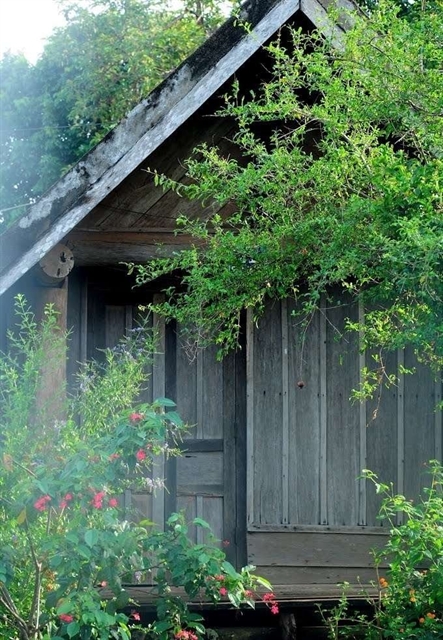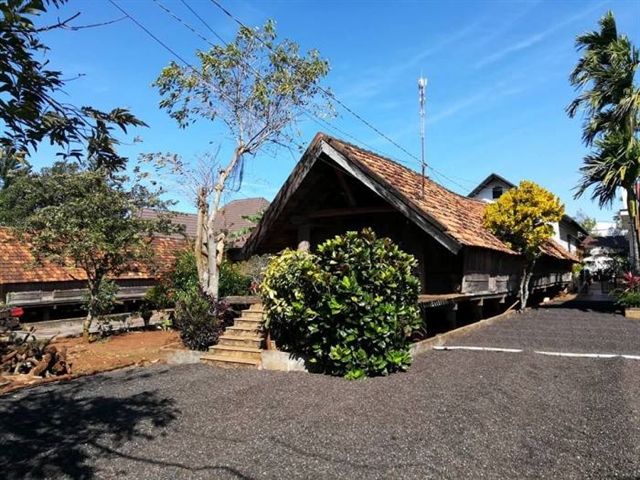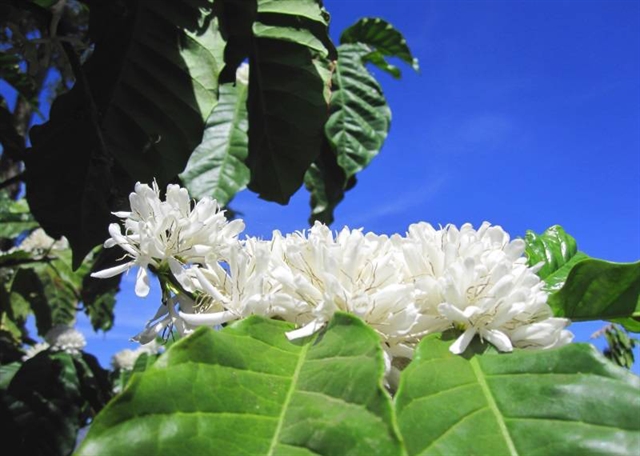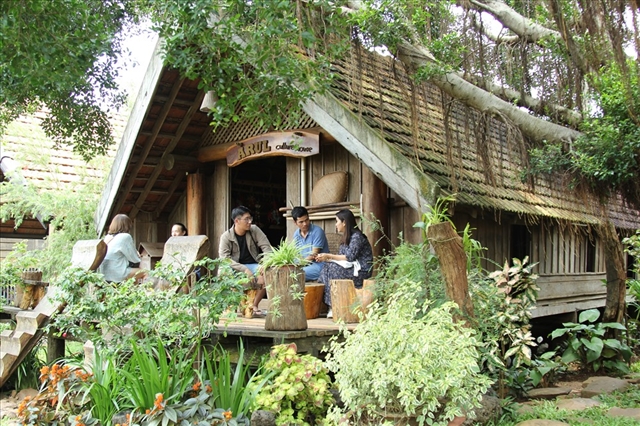Ako Dhong: Village In The City


Tradional long house is a typical feature in Ako Dhong village. Photo daktip.vn
By Lâm Giang
Only two kilometres north of Buôn Ma Thuột City, Ako Dhong holds the hidden beauty of a traditional village of the Ê Đê ethnic group.
We were amazed to find a traditional village still thriving in a modern city.
In the past, Ako Dhong was nothing but forests. The village patriarch Ama H’rin was the first person to reclaim the area and turn it into a new land for the Ê Đê ethnic community in 1956.
The tiny village used to have only three long houses that housed 10 families. Since 1975, villagers have been building households and a village school.
Now, the 55ha village has around more than 100 households and around 3,000 people who make a living from brocade, rượu cần (wine drunk out of a jar through straws) and handicraft products.
According to the Ede, “Ako” means upstream and “Dhong” means valley.
This is easy to explain as the village lies at the head of Ea Nuôl Dtream.
The village has a peaceful vibe, and the roads are clean and spacious. In front of each long house is a garden with many trees.
Long houses are part of the architecture of the Ê Đê people. They are an embodiment of the matriarchy and places where cultural and spiritual values of the Ê Đê people are preserved.
These houses, on stilts, are built from wood and bamboo. They are long enough to house many people, and residents here seldomly build new houses to replace the old ones. Instead they just expand the existing structures to make space for new family members.
One of the most imposing and beautiful long houses in the village belongs to H.Linh Niê, and cost VNĐ3 billion (US$130,400).
Niê is the owner of several hotels and restaurants in the village, but her love for tradition made her invest in the traditional long house.
“Nothing is as happy or warm as living in a traditional long house,” said Niê.
Coffee is the major crop for Ako Dhong villagers, with plantations stretching 26 hectares and providing a stable source of income.
Spring is the best time to visit Ako Dhong, when all the flowers are in bloom.

Coffee flowers bloom over the airspace. Photo dulichtaynguyen.org
We also had the chance to talk about the local gong culture with artisans and listen to songs about wild high mountain and thick forests.
The unique tombs also intrigued us. People here think that when they die, their souls will live on and go on to live in a better world. Statues are carved to pave the way, symbolising the ultimate joy of the living and the dead.
The last place we visited was Arul Café. It is a popular destination not only for tourists but also for Buôn Ma Thuột citizens who love the peaceful space and Ê Đê culture.

Arul café where tourists can learn about Ê Đê people. Photo laodong.vn
As an intriguing and untouched minority village, Ako Dhong has been selected to become a community-based tourism spot in Đắk Lắk Province.
“Buôn Ma Thuột City is setting up a detailed project and invest infrastructure, with support to renovate long houses, and resurrect traditional festivals to put the village on the tourism map for domestic and international visitors,” said Võ Tiến Dũng, head of the Department of Culture and Information of Buôn Ma Thuột City. VNS

The peaceful Ako Dhong Village. Photo mytour.vn
Submarine DeepView24 To Serve Visitors At Vinpearl Nha Trang
US dollar billionaire Phạm Nhật Vượng, Chairman of Vingroup, will put into operation DeepView 24, a spectacularl... Read more
Bánh Khọt A Must-try At Vũng Tàu Beach
Bánh Khọt (mini savory pancake) is a great breakfast dish that visitors must try when staying at Vũng Tàu beach... Read more
Explore The First Museum In Southern Việt Nam
The HCM City Museum of History is located at Nguyễn Bỉnh Kiêm Street in District 1, set beside Saigon Zoo and Bota... Read more
Explore Hidden Waterfall In Central Việt Nam
Tà Puồng Waterfall is one of Việt Nam Central’s most impressive natural sights, with an unspoilt beauty. Read more
Bat Pagoda, Home Of Thousands Of Bats In Mekong Delta
The Cửu Long (Mekong) Delta is home oi about 600 Khmer pagodas and each temple has a unique feature. The Bat Pago... Read more
100-year-old Bửu Sơn Pagoda Rests On One Pillar
The 100-year-old Bửu Sơn Pagoda in Đồng Nai Province, built in the 18th century, rests on only one pillar. Read more

